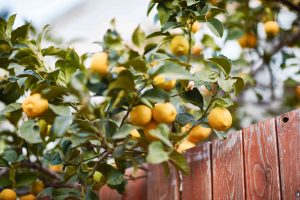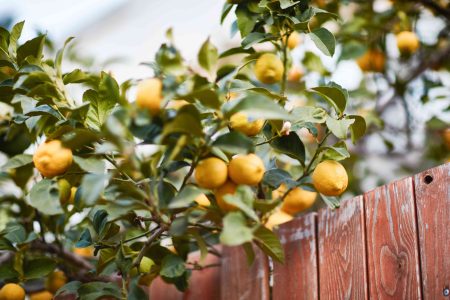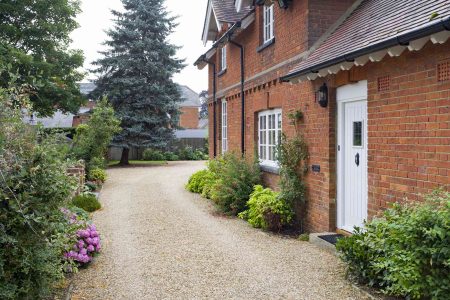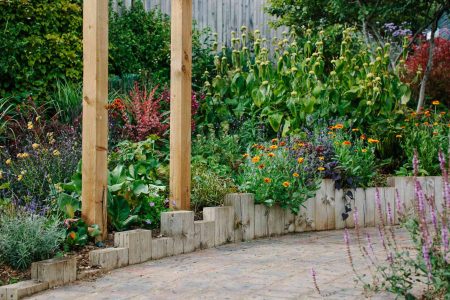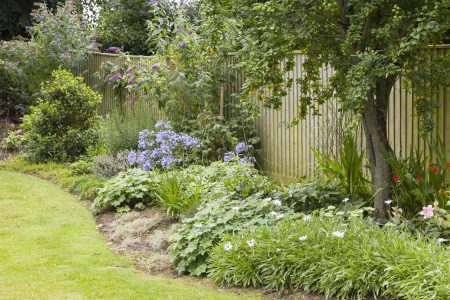When you want to landscape large areas of your property, you’ll need to know how much a yard of mulch costs. Mulch is best purchased by the yard for big projects.
Mulch slows evaporation, adds nutrients to soil, and controls soil temperature. A yard of mulch costs between $50 and $100, with an average cost of $75.
Learn how much a yard of mulch is for your next gardening or landscaping project.
Meet the Expert
Kelsey Ross is the owner of Austin-based Garden Party Landscape Design.
Cost of a Yard of Mulch
A yard of mulch can be purchased either in bulk (loose) or in bags. The cost is about the same in either format.
What Is a Yard?
“Yard” means cubic yard. One cubic yard is 3 feet high, 3 feet wide, and 3 feet long, or 27 cubic feet.
Want more gardening tips? Sign up for our free gardening newsletter for our best-growing tips, troubleshooting hacks, and more!
Bulk Mulch Cost
A yard of mulch costs about $75 in bulk. Bulk mulch is loose mulch delivered by a truck and dropped in a pile in your yard.
Bagged Mulch Cost
A yard of mulch costs from $50 to $100 in bagged form. Mulch comes in bags of 2 cubic feet or 1.5 cubic feet. Between 13 and 14 of the larger bags equals a yard, and 18 of the smaller bags equal a yard.
How to Calculate the Cost of Mulch
Calculate the mulch cost by first measuring the area to be covered (length multiplied by width). Then, multiply that figure by the depth coverage, usually 2 or 3 inches.
One yard of mulch covers a section 10 feet by 10 feet (100 square feet) at 3 inches thick. When spread at 2 inches thick, one yard of mulch covers a space of about 12 feet by 13 feet, or 160 square feet.
Cost by Type
Wood Mulch
The cost of wood mulch is $40 per yard for natural, undyed softwood mulch. The cost ranges up to around $100 per yard for cedar mulch, which has a natural red color and resists insects.
Pine Needles
Pine needle or pine straw mulch costs about $150 per yard. It is sometimes priced by the square foot, with an $85 to $95 box covering 160 square feet at a 2- to 3-inch depth.
Straw
One yard of wheat straw mulch costs $140 to $160 when purchased by the bale from a home center or hardware store at $35 to $40 per bale. Four bales of straw equal a yard of mulch.
Straw bales from a farm store or outlet that supplies farmers cost around $5 to $6 per bale, or $20 to $24 per cubic yard.
Rubber Mulch
Rubber mulch is recycled from old tires. As an inorganic mulch, it lasts long without fading or breaking down.
Rubber mulch costs around $250 per yard and is typically found in 0.8 cubic foot bags.
Mulch Delivery Cost
Because a yard of mulch is so large, you’ll need to factor in the cost of delivery or transportation.
Bulk Mulch Delivery
The average cost of bulk mulch delivery is about $100.
With bulk mulch, it must be professionally delivered, or you must have an open-bed vehicle (like a pickup) to pick it up yourself.
Bagged Mulch Delivery
The cost of bagged mulch delivery is about $50 per yard on a pallet.
Bagged mulch can be professionally delivered or you can pick it up yourself. A mid-size SUV or truck can accommodate a yard of mulch. Depending on the material, a yard of organic mulch can weigh 900 to 1,200 pounds.
Other Cost Factors
Labor
Landscapers cost from $14 to $25 per hour per person. If you need help picking up, delivering, or distributing your mulch, you may want to hire landscapers at prevailing local wages.
Yard Regrading
Regrading a yard costs an average of $2,600. Regrading a yard may be necessary to level out slopes. Lightweight mulch like wood chips or straw can get washed away on slopes.
Landscaping
Whether adding mulch is part of a larger landscaping project or needs to be done before mulching, general landscaping costs from $4 to $17 per square foot. On average, landscaping costs $11 per square foot.
How to Choose the Right Mulch
The most important choice with mulch is whether you need organic mulch to nourish the plant beds or decorative inorganic mulch to keep the soil moist. After that, you can choose mulch texture and mulch color.
Organic vs. Inorganic Mulch
Organic mulch is made from living matter. It breaks down and nourishes the soil. It also suppresses weeds and beautifies the yard. Hardwood chips, pine straw, wheat straw, and leaves are types of organic mulch.
Inorganic mulch is made from nonliving matter like rubber, rocks, and plastic. It is decorative and long-lasting since it breaks down at a far slower rate than organic mulch. It suppresses weeds and keeps the soil moist, but it does not enrich the soil.
Mulch Texture
Hardwood mulches come in two textures, rough or fine, says Kelsey Ross, owner of Austin-based Garden Party Landscape Design.
“When choosing hardwood mulch, consider single-grind for a rougher, long-lasting, rustic look,” Ross says. “For quicker nutrient release, look for a double-grind mulch, or one premixed with compost.”
Ross explains that finer ground mulch breaks down faster, which is great for plants, but it needs to be replaced more frequently.
Mulch Color
Choose a natural or a colored mulch. A natural mulch is the color of the material itself. Natural mulch contains no dyes, so it loses its color fairly quickly. Colored mulch comes in brown, black, and red to complement the landscape.
Benefits of Mulch
Mulch is a protective layer for the soil around plants with a host of benefits:
- Protects roots from physical impact
- Conserves plant moisture
- Enriches the soil
- Provides food for insects
- Deters erosion
- Slows weed growth
- Recycles materials
- Equalizes temperature changes
- Identifies sensitive areas
- Beautifies the yard, garden, and home
DIY vs. Professional Mulch Costs
DIY mulch costs about $175 per 100 square feet. Professionally-distributed mulch costs about $215 to $235 per 100 square feet.
DIY Mulch
Mulch, whether bulk or bagged, costs around $75 per yard, plus another $100 for delivery. Because most mulch is lightweight and easy to handle, homeowners can easily distribute it throughout the yard.
Professional Mulch
Hiring a professional to distribute the mulch costs about $175 for mulch and delivery costs. While landscaping can cost from $4 to $17 per square foot, distribution is relatively easy and should cost closer to $4 to $6 per square foot to spread out.
Best Time of Year to Buy Mulch
The best times of the year to buy mulch are spring and fall.
Commercially produced mulch is on sale at nurseries, garden centers, and home centers in early spring.
In late fall, free mulch from municipal recycling departments is available. By that time, fall leaves and limbs have been picked up and processed into mulch.
Sources of Low-Cost or Free Mulch
Several sources of mulch are inexpensive or even free.
Arborist Wood Chips
You can often get wood chips at a nominal cost or for free, says Allen Tate, ISA-Certified Arborist at Blooma Tree Experts, a Seattle-based tree care firm.
“We recommend to our clients that they don’t need to use store-bought mulch,” says Tate. “Unless they like the appearance of one consistent color, they can get arborist wood chips for free.”
Arborists and landscaping companies produce wood chips from tree trimming, stump grinding, and yard pickup. By the end of the day, they need a place to dump the chips. Arrange for a free or nominal-cost drop with a local company.
Municipal Mulch
If your local municipal waste department collects organic residential materials, it may offer free mulch processed from these materials. You will need to go to a recycling facility to pick up the mulch yourself.
Mulched Leaves
Fallen leaves are a good source of low-cost mulch but they must be shredded. Run a lawn mower over the leaves or run them through a leaf mulcher.
The best leaf mulchers for producing yard mulch are standalone units as they have the most power. With these units, you’ll need to rake the leaves into a pile first.
Paper
Shredded newspapers and grocery bags provide low-cost mulch. Plus, they’re good in a pinch when conventional mulch is unable to be picked up.
You can even lay out full sheets of newspaper or cut open grocery bags and wet them. Just make sure that the paper is uncoated.
DIY Chipped Wood
Consider purchasing a wood chipper to grind thin tree and shrub limbs into DIY mulch.
The best wood chippers combine a minimum reduction ratio of 10:1 and a feed diameter of up to 3 inches with a price point you’re comfortable with.
Grass Clippings
Bag your mowed grass and pile it up for distribution later in garden beds. Spread the clippings thinly. Avoid weeds when mowing as they may create new weeds in your mulch beds.
Straw
Break up bales of straw or hay and use it as mulch around your yard. Businesses that use decorative straw in the fall need to get rid of the straw as winter approaches, and you can help with that.
-
How much does one yard of mulch cover?
One yard of mulch at 2 inches thick covers a space about 12 feet by 13 feet, or 160 square feet. One yard of mulch at 3 inches thick covers an area of around 10 feet by 10 feet (100 square feet).
-
How many bags of mulch equal one yard?
One yard of mulch equals 13 to 14 bags of mulch (each bag containing 2 cubic feet of mulch) or around 18 bags of mulch (each bag 1-1/2 cubic feet).
-
How much is 10 cubic yards of mulch?
Ten cubic yards of mulch costs about $750. Mulch costs about $75 per yard on average, whether in bulk or bagged form.
Read the full article here




